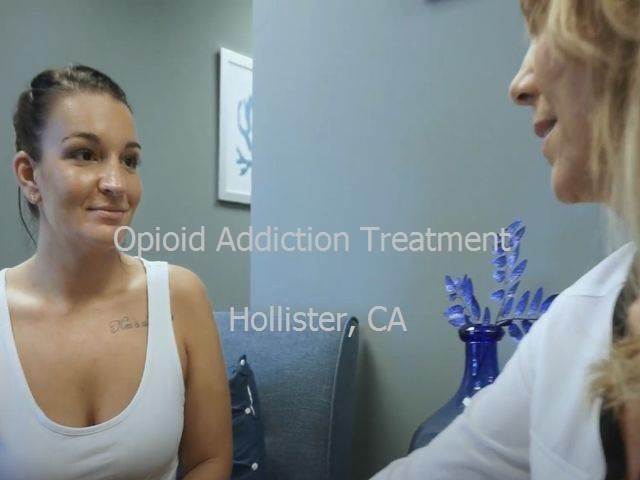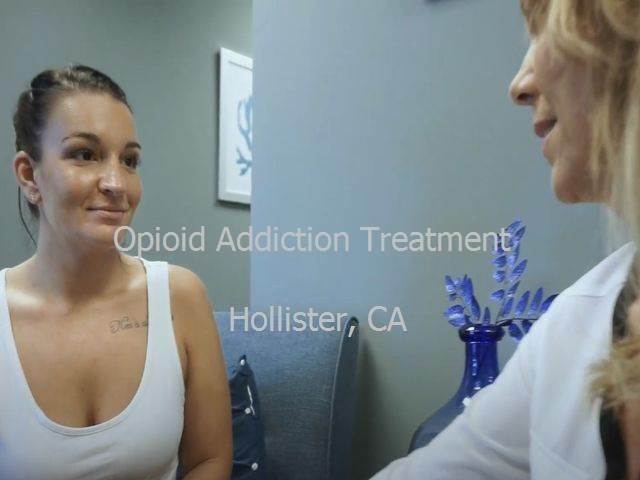Opioid use disorder is a health problem that impacts many people in the United States nowadays. 10s of countless individuals pass away from opioid overdose every year, and much more are dealing with opioid addiction. Sadly, instead of going to the hospital to get treatment for substance abuse carries a bad preconception, people try to combat the addiction by themselves. This often causes failure and regression.
The issue of opioid use disorder in Hollister, California

Although, nowadays, effective treatments for opioid misuse are ending up being more available, a lot of people still struggle with this problem. They frequently blame themselves and their lack of self-discipline for the inability to eliminate drug addiction. In reality, this disorder is not a kind of bad behavior or an indication of ethical failure. It is a chronic medical condition that includes considerable modifications in specific parts of the brain, a physical dependence that is very difficult to eliminate without expert help. Only recently, doctor came close to comprehending the mechanism of opioid addiction and establishing much better opioid treatment programs.
The Hollister, California, opioid addiction treatment center provides a number of methods of treating substance use disorder. Keep checking out to learn more about the nature of opioid addiction and which kinds of treatment provide the clients a greater chance of successful recovery.
Opioid addiction treatment rehab services
National institutes for healthcare developed various techniques of helping patients with opioid dependence. Some of them include taking addiction medicine to deal with opioid cravings. In some cases, treatment retention is recommended. It is important to freely discuss your situation with health care providers to pick the most efficient treatment plan.
Substance abuse treatment include a number of types:
- Treatment retention. Some people want to get away from the environment that motivates opioid misuse. They can not fight drug abuse when they are surrounded by triggers and their family members or good friends have easy access to opioids. The drawback of this approach is the requirement to take a break from work. The positive aspect of this program is satisfying people with the same struggle and getting their assistance.
- Outpatient opioid addiction treatment. Patients can continue to work and live as they did while receiving health and human services. They go to hospital for systematic reviews, counseling and medications. This is a less drastic modification of way of life compared to living in the treatment facilities. Such patients do not risk losing their tasks however need to be responsible about remaining on track.
- Behavioral therapy. This kind of treatment includes educating clients on how to make positive modifications in their behavior gotten in touch with opioid use disorders. They get access to the entire series of mental health services such as cognitive behavioral therapy, individual therapy, contingency management, family therapy, support groups, and so on.
- Medication assisted treatment (MAT): medicines plus counseling. Whether it is a domestic program or an outpatient healthcare service, any treatment plan can consist of taking medications. This kind of treatment of opioid misuse has proven to be very reliable. Sadly, it is typically misinterpreted and treated with suspicion. Medications that are used to treat opioid addiction belong to the group of opioids themselves, so there is a misconception that by taking them you merely replace one addiction with another. This is not true for 2 factors. Initially, the medications do not produce the euphoric effects unlike other opioid drugs. And 2nd, the stats show that using medical assisted therapy assists to substantially reduce the variety of deaths from overdose
- The drawback of this type of treatment is that it is not extensively offered. Before the specialists can prescribe these medications, they need to go through particular training. And after they complete the course, they can just prescribe this treatment to a limited variety of clients. For that reason, facilities that supply MAT frequently have a long waiting list. The advantage of this kind of therapy is that thanks to the medications, the clients do not experience severe withdrawal symptoms. The cravings are not so strong also, so many people remain in treatment and are less most likely to regression.
Just an expert clinician educated on substance use disorder can choose the best treatment. The doctor needs to understand and take into account all the factors that led a person to drug abuse and mental health problems. Contact the opioid addiction treatment center in Hollister, California, to get certified help.
Mechanism of opioid addiction
Opioid drugs hack the reward system of a person’s brain and make the person feel excellent if they take opioids. Normally, fulfilling such needs as eating or recreation lead to the release of dopamine. This hormone is responsible for the sensation of pleasure or complete satisfaction. It rewards people for doing things that are very important for the survival of mankind.
When opioids reach the brain, they attach themselves to particular receptors, which sets off the reward system and creates the sensation of high. People wish to experience that feeling again. More significantly, their brain signals them that taking opioids is the most vital thing for their survival. That is how the addiction settles in.
There are two outcomes of this modification in the brain:
- The very first one is the advancement of drug tolerance. People need more drugs to reach a state of ecstasy. Opioid use disorder regularly starts with prescription painkiller. In some cases clients increase the dosage of prescription opioids to get high, and this results in opioid abuse. Some individuals even change to stronger drugs like heroin.
- The 2nd outcome is opioid dependence. Individuals continue substance abuse to prevent withdrawal symptoms. Due to malfunction of the reward system, without the drugs individuals feel restlessness and have a horrible mood.
Other signs of opiate withdrawal include:
- Body aches;
- Lack of sleep;
- Nausea;
- Diarrhoea;
- Goosebumps, etc.
Knowledge about the nature of substance use disorders can assist medical practitioners inform their clients on what withdrawal symptoms to anticipate and how to deal with the cravings. Depending on the client, physicians pick the most effective treatments that might include medicine prescription and behavioral therapies. It might not be possible to entirely remove the opioid addiction, but mental health services can significantly reduce the opioid misuse and the number of heroin overdose deaths.
Opioid addiction ought to be treated the method one would deal with a persistent illness. People experiencing drug addiction are motivated to join the Hollister, California, rehab programs and enhance their health and total lifestyle. When you give up the drugs, return for maintenance treatment.
Who can get treatment for opioid abuse in Hollister, CA?

People typically feel embarrassed to go to the healthcare facility for opioid abuse treatment. There are 2 primary reasons for this: they are either scared to have a bad image in the neighborhood or have already given up on themselves. However these concerns ought to not dissuade clients from combating substance use disorders. Anybody is complimentary to reach rehab centers and see what help they can get.
Two primary categories of opioid use disorders are treated with Hollister, California, rehab programs:
- Prescription drug abuse. Opioids are typically prescribed in the form of painkillers for chronic or severe pain. It is possible to establish addiction to these medications. As a result, some patients begin to misuse opioids and take bigger dosages of them. National institutes such as the Center for disease control developed suggestions on how to help these clients slowly lessen the drug use.
- Heroin addiction. This disorder routinely stems from the previous one. However some individuals turn to this drug for leisure functions. Combating heroin addiction is very hard, and clients should use all the treatment resources they can gain access to. Even then, it typically takes a number of efforts to beat the condition.
The most effective treatments normally consist of both mental health services and medications.
Frequently Asked Questions – FAQ
Is opioid addiction a mental illness?
Opioid use disorder is a chronic brain condition. At first, people may turn to drugs because of personal concerns. That is why substance abuse and mental health are typically treated at the same time. The majority of clients take advantage of therapy, behavioral therapies and support groups. But it is important to remember that opioids make substantial modifications to the brain, making it really hard to combat the addiction without medications.
What medications are used to treat opioid use disorder in Hollister, California?
National institutes authorized three medications for treatment of opioid drug abuse: methadone, buprenorphine and naltrexone. They have various names and effects on the brain. The first two medications replace the opiates and smooth the withdrawal symptoms without making the patients high. Naltrexone obstructs the mu-opioid receptor, working as an opioid antagonist.
How do I get medication-assisted treatment in Hollister, California?
Only a licensed clinician can prescribe you medications for opioid use disorder. Visit the office of a health care supplier that finished the essential training and obtain a program of medication-assisted treatment.

